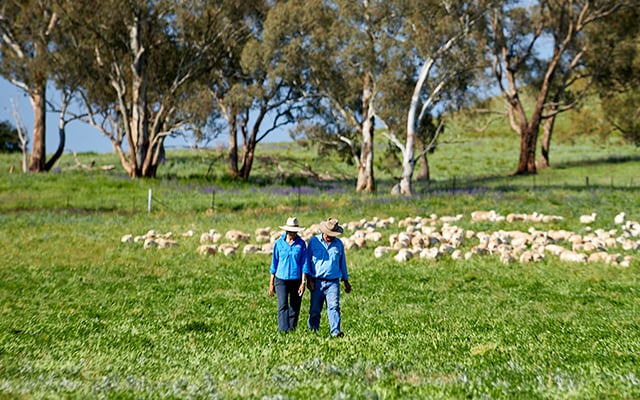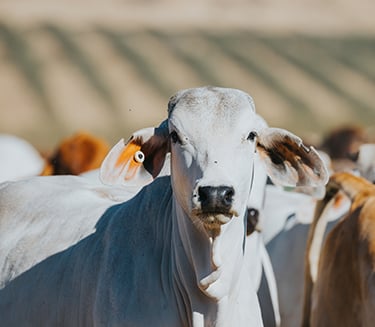It’s true that cattle, sheep and other ruminants emit methane, a greenhouse gas (GHG).
Strategies to reduce methane can provide faster climate mitigation in the short term
Methane is a potent Greenhouse Gas (GHG) but relatively short lived in comparison to other GHGs.
Over 20 years, methane is 80 times more potent at warming the atmosphere than CO2 but has a half-life of 10-12 years compared to centuries of other GHGs. This means methane is responsible more for near-term climate change, but it also means that strategies that reduce methane, like improving efficiency and low methane additives, can give us faster climate mitigation in the short term.
Biogenic methane is produced from plant and animal sources – including livestock - that have recently converted from carbon dioxide (CO2) in the atmosphere.
Over time methane produced from biogenic sources decay back to CO2 without adding to the concentration of CO2 in the long term. Fossil methane emissions on the other hand return geological carbon to the atmosphere that has typically been stored underground for millions of years, adding to atmospheric pool of carbon dioxide.
Does red meat contribute to global warming?
When looking at the share of national emissions the red meat industry contributes approximately 10% of national GHG emissions.
In 2022-23, the major sources of national emissions (excl Land Use, Land-Use Change and Forestry (LULUCF)) were stationary energy (47.9%), transport (18.3%), and agriculture (15.6%). Enteric methane, largely from sheep, dairy and beef cattle, contributes around 71% of agriculture’s footprint. If the red meat industry was its own category, in 2022-23, the industry contributed approximately 10% of national greenhouse gas emissions (incl LULUCF)1.
While methane is a natural byproduct of digestion for livestock, it is nonetheless a powerful greenhouse gas. The red meat industry is investing in ways to reduce methane produced by cows. Grazing farms also have much potential to manage their landscapes to draw down or ‘store’ carbon out of the atmosphere in vegetation, trees and soils.
What’s the industry doing about reducing GHG emissions?
In Australia, net GHG emissions from the red meat industry are falling. In fact, the Australian beef, sheep and goat industries reduced net GHG emissions by 70.2%1 in the period from 2005 to 2023.
The red meat and livestock industry is investing in innovative emissions reduction practices and technologies, with the aim of achieving carbon neutrality.
On-farm, Australian red meat producers are reducing net emissions through:
- Improvements in feeding practices (better pastures, new types of food, more grains)
- Improved ways of handling manure
- Improved genetics and animal management
- Sequestering (storing) carbon in the land and trees
- Incorporating renewable energy sources
Processing plants are also investigating the potential of re-using methane and biogas as a renewable energy source.
Did you know?
- Feed supplements such as red seaweed or Bovaer® can significantly reduce methane emissions from cattle. In Australian feedlot research trials, Asparagopsis taxiformis (red seaweed) and Bovaer®10 have reduced methane between 15 - 90% when fed daily to cattle. Research is underway to understand their potential for grazing cattle2.
- Farmers looking after the land and biodiversity can also increase the amount of carbon sequestered in soils and vegetation on property.
1 Data analysed from the National Inventory Report 2023, Volume 1 (dcceew.gov.au) and 2023 Greenhouse gas emissions footprint of red meat (mla.com.au)
2 Meat & Livestock Australia 2021, The feed additive reducing methane emissions by up to 90%, and Meat & Livestock Australia 2023, P.PSH.1351 - Efficacy and safety of Asparagopsis extract in a canola oil carrier for feedlot cattle





